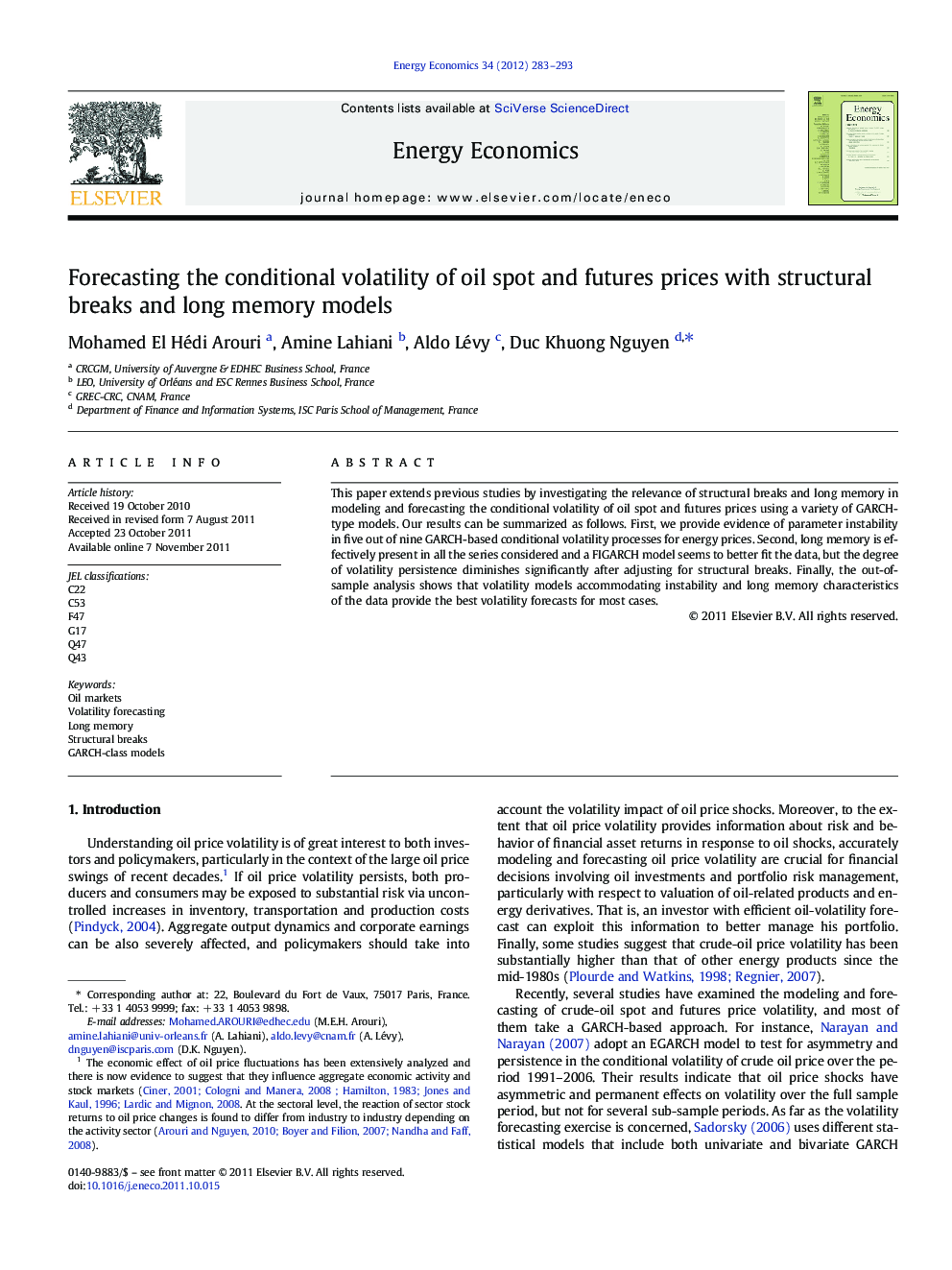| کد مقاله | کد نشریه | سال انتشار | مقاله انگلیسی | نسخه تمام متن |
|---|---|---|---|---|
| 5065550 | 1372320 | 2012 | 11 صفحه PDF | دانلود رایگان |

This paper extends previous studies by investigating the relevance of structural breaks and long memory in modeling and forecasting the conditional volatility of oil spot and futures prices using a variety of GARCH-type models. Our results can be summarized as follows. First, we provide evidence of parameter instability in five out of nine GARCH-based conditional volatility processes for energy prices. Second, long memory is effectively present in all the series considered and a FIGARCH model seems to better fit the data, but the degree of volatility persistence diminishes significantly after adjusting for structural breaks. Finally, the out-of-sample analysis shows that volatility models accommodating instability and long memory characteristics of the data provide the best volatility forecasts for most cases.
⺠We focus on the modeling and forecasting of petroleum price volatility. ⺠Volatility persistence diminishes significantly after adjusting for structural breaks. ⺠Models accounting for instabilities almost provide better volatility forecasts. ⺠FIGARCH with structural breaks is the best model when structural change is present.
Journal: Energy Economics - Volume 34, Issue 1, January 2012, Pages 283-293